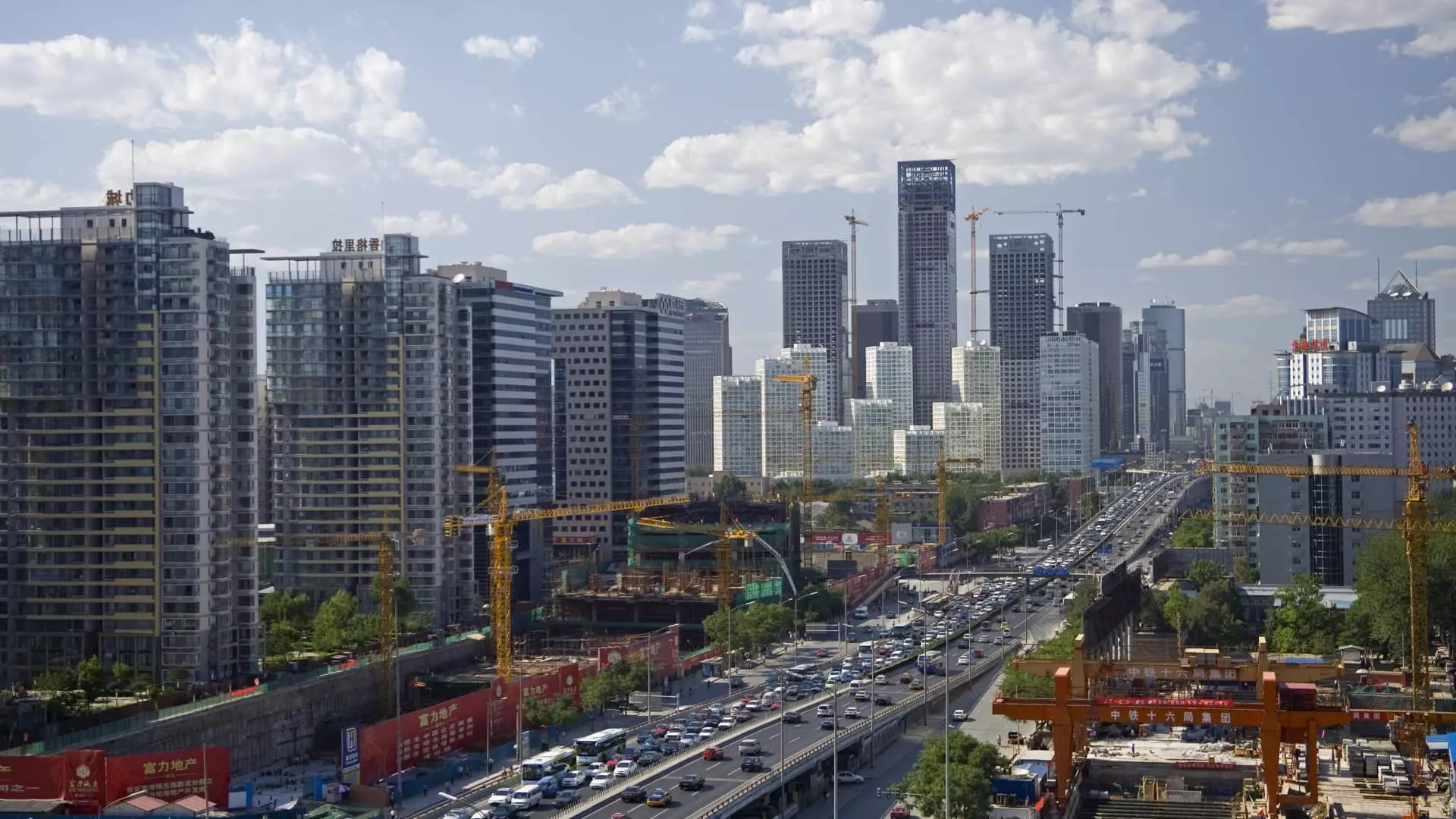China’s economy has shown a remarkable resilience lately, reporting a surprising 5.4% growth in the first quarter of the year, a figure that comfortably surpasses the anticipated 5.1%. This growth is indicative of a broader recovery that began late last year, propelled by substantial policy stimulus measures. The underlying narrative appears positive; retail sales in March soared by 5.9%, significantly outpacing the 4.2% forecast, and industrial output expanded impressively by 7.7%, exceeding the median estimate of 5.8%. However, upon closer inspection, these statistics beg for cautious interpretation. They reflect a short-term buoyancy that may overshadow deeper systemic cracks threatening to derail this economic momentum.
The reality, as indicated in the data, is a two-fold situation: whilst certain sectors are thriving, others are precisely on the precipice. The real estate sector, a cornerstone of China’s development narrative, is particularly concerning, exhibiting a staggering 9.9% decline in fixed asset investment. While infrastructure and manufacturing investments may be on the rise, they cannot fully compensate for the weakness in real estate, raising fundamental questions about the sustainability of China’s economic trajectory.
The Dark Clouds of Tariff Wars
Further complicating matters, the United States’ trade policies loom ominously over China’s economic landscape. The escalating tariff conflict has seen U.S. President Donald Trump impose levies totaling 145% on various Chinese goods. China, in a tit-for-tat response, has retaliated with its own elevated tariffs of 125%. The repercussions of this trade war extend beyond immediate revenue impacts; they threaten to suffocate the export sector, which has been a significant engine for economic growth. Analysts are growing increasingly pessimistic. A recent forecast from UBS Group anticipates a dismal 3.4% growth rate for China this year, largely predicated on the exports to the U.S. dropping by two-thirds. If these predictions hold true, the consequences for China’s economy could be profound.
Investment banks have already begun to reduce their growth expectations for the country, acknowledging that the ambitious target of around 5% set by the Chinese leadership is becoming increasingly elusive. The dichotomy of data showing growth versus the underlying fear of contraction is troubling. It reflects an economy caught in a precarious balancing act, striving to innovate and expand while grappling with external pressures that threaten to stifle its achievements.
Domestic Demand: An Insufficient Engine
Despite the glimmer of hope presented by recent data, the National Statistics Bureau has emphasized that domestic demand remains critically insufficient. This lack of robust internal consumption weakens China’s overall economic position, making it vulnerable to external shocks. Policymakers are caught in a bind; they must implement stronger macroeconomic policies to rejuvenate domestic consumption while simultaneously addressing the headwinds from overseas trade disputes. As highlighted by Zhiwei Zhang, president and chief economist at Pinpoint Asset Management, the “damage from the trade war will show up in macro data next month.”
Nevertheless, the government has promised proactive measures, which begs the question: can monetary policy and fiscal stimulus provide the necessary cushioning against these external pressures? There’s talk of potential interest rate cuts and increased fiscal spending allocated to offset the tariff impact. While these are necessary steps, they also bring up the specter of increasing public debt, potentially resulting in long-term economic instability if not managed carefully.
The Role of Innovation in Economic Recovery
Amidst all the turmoil, innovation could play a crucial role in shaping China’s recovery path. The announcement from the tech startup DeepSeek regarding breakthroughs capable of rivaling U.S. counterparts indicates a potential pivot point for the economy. This emphasis on innovation is not merely a buzzword; it signals a shift in focus towards sectors that could harness both domestic and international markets without falling prey to tariff conflicts.
However, relying on innovation alone is a double-edged sword. While it has the potential to catalyze growth in new industries, there are significant challenges. Transforming innovative dreams into tangible economic outputs requires a conducive environment laden with investments and support, neither of which can be guaranteed in a climate of fear spurred by geopolitical tensions.
While China’s economy showcases optimistic indicators—a façade of growth amid turmoil—it is crucial to peel back layers of surface-level statistics and examine the underlying vulnerabilities. As the government seeks to bolster its economic foundations, one must question whether these strategies will be enough to navigate the stormy seas of global economic uncertainty.

Leave a Reply